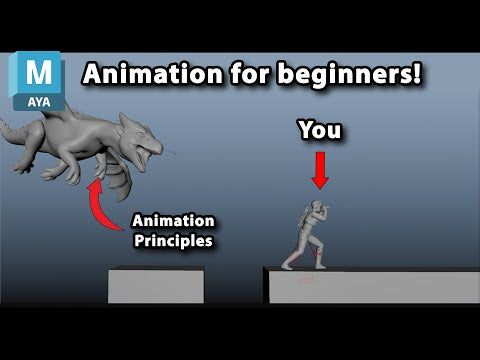Your Cart is Empty
Customer Testimonials
-
"Great customer service. The folks at Novedge were super helpful in navigating a somewhat complicated order including software upgrades and serial numbers in various stages of inactivity. They were friendly and helpful throughout the process.."
Ruben Ruckmark
"Quick & very helpful. We have been using Novedge for years and are very happy with their quick service when we need to make a purchase and excellent support resolving any issues."
Will Woodson
"Scott is the best. He reminds me about subscriptions dates, guides me in the correct direction for updates. He always responds promptly to me. He is literally the reason I continue to work with Novedge and will do so in the future."
Edward Mchugh
"Calvin Lok is “the man”. After my purchase of Sketchup 2021, he called me and provided step-by-step instructions to ease me through difficulties I was having with the setup of my new software."
Mike Borzage
Unlocking the Future of Construction: The Transformative Power of 5D BIM in Project Management
September 12, 2024 3 min read


Introduction to 5D BIM
5D Building Information Modeling (BIM) is an advanced process that integrates multiple dimensions of information into a single, unified model. Traditionally, BIM has been known for its 2D and 3D capabilities, offering detailed visual representations of buildings. However, 5D BIM goes beyond these basic dimensions by incorporating the aspects of time (4D) and cost (5D).
The addition of these two dimensions transforms the BIM model into a powerful tool for project management. By integrating scheduling (time) and cost estimation, 5D BIM provides stakeholders with a comprehensive understanding of the project lifecycle, from inception to completion.
Historical Context and Evolution
The history of BIM dates back several decades, with its roots in the early developments of CAD (Computer-Aided Design) systems. Over the years, BIM has evolved significantly, moving from simple 2D representations to complex 3D models that provide a detailed visualization of the physical and functional characteristics of a building.
Key milestones in the development of 5D BIM technology include the integration of time and cost dimensions, which have been driven by the need for more efficient and effective project management tools. Today, 5D BIM is widely adopted in the construction industry, offering significant benefits in terms of planning, visualization, and decision-making.
Key Capabilities and Features of 5D BIM
Integrated Project Planning
One of the most significant capabilities of 5D BIM is its ability to integrate design, scheduling, and cost estimation into a single model. This integration ensures that all project stakeholders have access to the same information, facilitating better coordination and collaboration.
The benefits of having a unified model are numerous:
- Improved accuracy in project planning and execution
- Enhanced coordination among different teams
- Streamlined communication and information sharing
Enhanced Visualization and Simulation
5D BIM offers advanced capabilities in visualizing project timelines and budgets. By creating a dynamic model that reflects changes in real-time, stakeholders can gain a clear understanding of the project's progress and financial status.
Simulations are a key feature of 5D BIM, allowing project managers to predict outcomes and identify potential issues before they arise. This proactive approach helps in minimizing risks and ensuring the project stays on track, both in terms of time and budget.
Data-Driven Decision Making
Data analytics plays a crucial role in optimizing project plans and budgets within the 5D BIM framework. By leveraging real-time data, project managers can make informed decisions that enhance efficiency and effectiveness.
Examples of how real-time data impacts decision-making processes include:
- Adjusting schedules based on actual progress
- Refining cost estimates according to current market conditions
- Identifying and addressing issues promptly to avoid delays
Benefits of 5D BIM for Construction Project Management
Cost Efficiency and Budget Control
One of the most significant benefits of 5D BIM is its ability to enable more accurate cost estimations and budget tracking. By integrating cost data into the BIM model, project managers can gain a comprehensive view of the project's financial aspects, ensuring better budget control.
Improved Collaboration and Communication
5D BIM facilitates better communication among project teams by providing a centralized platform where all relevant information is accessible. This centralized approach enhances collaboration and ensures that all stakeholders are on the same page.
Some of the tools and features that enhance collaboration include:
- Shared models that update in real-time
- Integrated communication tools for seamless information exchange
- Visual dashboards that provide an overview of the project's status
Risk Management and Issue Resolution
5D BIM is instrumental in identifying potential risks and resolving issues early in the project lifecycle. By leveraging simulations and predictive analysis, project managers can anticipate problems and implement solutions before they escalate.
Challenges and Future Directions
Implementation Challenges
Despite its many benefits, the adoption of 5D BIM is not without challenges. Common obstacles include the need for significant investment in technology and training, resistance to change among stakeholders, and the complexity of integrating existing systems with new BIM processes.
Strategies for overcoming these challenges include:
- Comprehensive training programs for all stakeholders
- Phased implementation to ensure a smooth transition
- Collaboration with technology providers to customize solutions
Technological Advancements
Emerging technologies such as AI, machine learning, and IoT have the potential to further enhance the capabilities of 5D BIM. These technologies can provide advanced analytics, automate routine tasks, and offer real-time monitoring of project progress.
Future Trends and Predictions
The future landscape of 5D BIM in construction is expected to be shaped by several trends, including increased integration with other technologies, greater emphasis on sustainability, and the development of standardized processes and policies to drive widespread adoption.
Conclusion
5D BIM holds transformative potential for the construction industry, offering significant benefits in terms of project planning, visualization, and management. As the technology continues to evolve, it is essential for stakeholders to explore and invest in 5D BIM technologies to stay competitive and achieve better project outcomes.
Also in Design News

Animation for Beginners - Part 2: 12 Animation Principles you NEED to know
January 14, 2025 1 min read
Read More
ZBrush Tip: Enhancing 3D Model Precision with ZBrush's TrimCurve Tool
January 14, 2025 2 min read
Read More
Revit Tip: Utilizing Design Phases to Enhance Revit Project Efficiency and Collaboration
January 14, 2025 1 min read
Read MoreSubscribe
Sign up to get the latest on sales, new releases and more …


